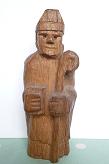| Rector or lay impropriator. He, or she, owned land that was assigned to the upkeep of the chancel of the church building and to provide the ‘cure of souls’. Before the dissolution of the monasteries there was also a responsibility to provide hospitality and support the needy. Universities and schools were also endowed in the same way.A variation on the role was a preband or canon. He was a ‘fast track’ priest who may have come from a reasonably wealthy background and would have been well-educated and planing a career in the church or government. He would acted on behalf of the bishop where land was held by the cathedral. Litton is an example of a parish that was owned by the Bishop of Bath & Wells. |
| An advowson was the legal right to collect tithes to finance their obligations. A Rector should have been a practicing priest who conducted church services and minister to the parishioners but he may have been a pluralist who took a living from several parishes so he may have delegated those responsibilities to a vicar or a curate. |
| A significant amount of church land was held by laymen, typically lords or the ruling monarch, who could not perform church services so they were called lay impropriators. The advowson was an asset that could be passed on from parent to child which is a very significant point. The other clergy only held land for their life time and it reverted to the church, or other organisation, on their death.Married women could not own anything until a Victorian law began the process of legal equality but daughters could inherit from their parents and widows could inherit from their husbands so some lay impropriators were women. Lay impropriators would ‘present’ their choice of vicar to the bishop in charge of the dioceses who would normally accept the person suggested. |
| Vicar. A vicar was presented by the rector to fulfil the spiritual role. Some rural vicars were barely literate and may not have been an ordained priest until Elizabeth I passed a law making it compulsory for parish priests to be properly qualified. A rural vicar would have had a farm, or glebe lands, to support himself and he would have the right to collect the ‘little tithes’, if he could. He only held these rights during his lifetime and they would revert to the rector on his death |
| Curate. He was the lowest in the hierarchy and was paid a stipend. |
| Monks were, and still are, a separate branch of the clergy who may have belonged to a number of orders which specified different rules of behaviour and function. |
| Friars were independent preachers who could be very critical of parish priests and monks as well as the lay powers. Friar Tuck from the Robin Hood stories is a good example. They would wander the country side preaching in the open and were a source of news as well as spiritual inspiration |
|
 This website focuses on the role of the clergy in their historical and secular role rather than their religious function. This page describes how things used to be, it does not reflect the current structure of the church or the practices of modern clergymen.The clergy were the only literatee people for most of history so most governmentand business activities that needed writing or arithmetic was performed by the clerics which is where the word clerk and the name Clark(e) comes from. Bishops were political as much as religious leaders.A question that is often asked is what is the difference between a rector, vicar and parson. Parson is derived from ‘person’ because the local cleric was the person to see if any reading or writing was involved. The other roles are described below.
This website focuses on the role of the clergy in their historical and secular role rather than their religious function. This page describes how things used to be, it does not reflect the current structure of the church or the practices of modern clergymen.The clergy were the only literatee people for most of history so most governmentand business activities that needed writing or arithmetic was performed by the clerics which is where the word clerk and the name Clark(e) comes from. Bishops were political as much as religious leaders.A question that is often asked is what is the difference between a rector, vicar and parson. Parson is derived from ‘person’ because the local cleric was the person to see if any reading or writing was involved. The other roles are described below.